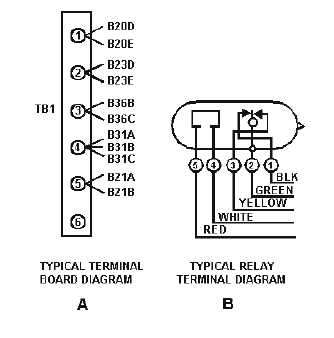3-14
light. Referring to the schematic diagram (figure 3-10), you will recall that when the light switch is placed
in the PARK position, +12 volts are applied to point (2). If all the lights come on except the tag light, then
the fault must be between point (2) and the tag light ground.
On the schematic shown in figure 3-11, you can see that there are numerous connections to point (2).
Point (2) on the wiring diagram is actually composed of three different functions: terminal 1 of TB 1 (the
head lamp junction block), terminals 1 and 2 of TB2 (the tail lamp junction block), and the "T" terminal
of the light switch; all correspond to point (2) on the schematic. The fault here is in the tag light, which
normally receives its +12 volts from terminal 1 of TB2.
To use a voltmeter to find the fault, place the positive lead of the voltmeter to the ground terminal of
the tag light and the negative lead to the frame. The voltmeter should read zero, because there should be
no difference of potential between the two points. If the meter reads a voltage, the ground lead is either
open or has a high-resistance connection. If the meter reads zero, as it should, you will have to go to
another test point. In this case, place the positive voltmeter lead on the positive terminal of the tail light. If
the voltmeter reads +12 volts, the light bulb is probably burned out or the light socket is defective. If the
voltmeter reads zero, then the open is between terminal 1 of TB2 and the light.
TERMINAL DIAGRAM
A terminal diagram is useful when connecting wires to terminal boards, relays, switches, and other
components of a circuit. Figure 3-12 shows two typical terminal diagrams. View A of the figure shows
the wire numbers connected to each terminal of a terminal board. View B shows the different color codes
of the wires that are connected to a relay.
Figure 3-12.—Terminal diagrams.
This has been a brief overview of the use and interpretation of electrical diagrams. The diagrams
used were selected because of their simplicity and ease of interpretation. Many diagrams you will
encounter are far more complex. Start with the simpler diagrams you will be working with on the job.
Your proficiency in using the more complex diagrams will increase with experience and study.

